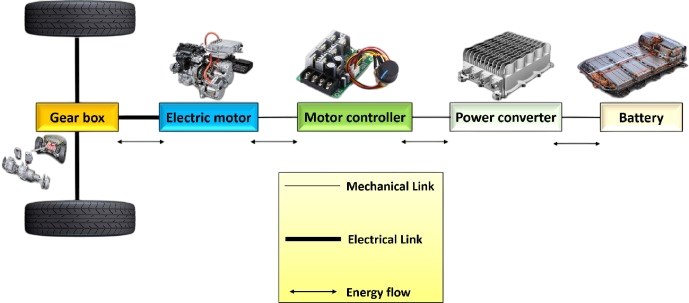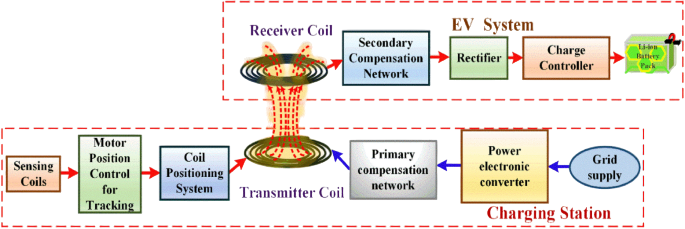
- Introduction to Electric Cars Work
- Key Components of EVs
- Power Source
- Electric Motor Functionality
- Power Control Unit
- Regenerative Braking
- Charging Mechanism
- Drive Modes and Controls
- Vehicle-to-Grid (V2G)
- Energy Efficiency
- Summary and Real-world Examples
Introduction to Electric Cars Work
Understanding how Electric Cars Work is essential to appreciate their growing impact on modern mobility. Electric Vehicles (EVs) are automobiles powered primarily or entirely by electric motors, drawing energy from rechargeable battery packs. As the world moves toward sustainability, EVs have emerged as a key solution for reducing greenhouse gas emissions, cutting air pollution, and decreasing dependence on fossil fuels. To explore how intelligent systems accelerate this transition through predictive analytics, smart energy management, and adaptive mobility solutions, explore Artificial Intelligence Training a hands-on course that covers machine learning, embedded AI, and sustainable technology applications for the clean energy and mobility sectors. From compact city cars to high-performance models, EVs are reshaping the landscape of personal and public transportation. Electric vehicles come in various forms, including Battery Electric Vehicles (BEVs), Plug-in Hybrid Electric Vehicles (PHEVs), and Hybrid Electric Vehicles (HEVs). By learning how Electric Cars Work, we can better understand the innovation driving cleaner, quieter, and more efficient transportation systems that are shaping the sustainable future of mobility.
Key Components of EVs
Electric vehicles (EVs) differ from traditional internal combustion engine (ICE) vehicles because they have simpler drivetrains and fewer moving parts. The battery pack is essential for an EV’s operation, serving as the core energy source that powers the motor and auxiliary systems. To understand how these batteries are replenished and the technologies enabling faster, safer, and more efficient charging, explore Electric Vehicle Charging a comprehensive guide that explains charging levels, connector types, infrastructure growth, and innovations shaping the future of EV energy supply. It acts as the main energy storage system, supplying the power needed for the vehicle.

This energy goes to the electric motor, which efficiently turns electrical energy into mechanical energy to move the vehicle. The power control unit (PCU) is critical in managing the power flow, helping the vehicle run smoothly and efficiently. The onboard charger changes alternating current (AC) into direct current (DC) to charge the battery. To keep everything working well, a thermal management system controls the temperature of both the battery and electronic components. This prevents overheating and extends the vehicle’s lifespan. Also, the regenerative braking system captures energy while braking and converts it back into usable power, which improves efficiency.
Ready to Get Certified in Artificial Intelligence ? Explore the Program Now Artificial Intelligence Online Training Offered By ACTE Right Now!
Power Source
At the core of every EV is its battery, which stores electrical energy and supplies it to the motor. The most common battery types include lithium-ion, nickel-metal hydride, and solid-state variants, each offering distinct advantages in energy density and lifecycle. To understand how these batteries interact with control systems that regulate power delivery, safety, and performance, explore Electric Vehicle (EV) Controller a comprehensive guide that explains controller architecture, signal processing, energy management, and the critical role controllers play in optimizing EV efficiency.
- Lithium-Ion: High energy density, long life cycle.
- Lithium Iron Phosphate (LFP): Safer, with more stable thermal performance.
- Solid-State Batteries (emerging): Higher energy density and improved safety.
Key Battery Parameters:
- Capacity (kWh): Determines driving range.
- Voltage: Influences power output.
- Cycle Life: Number of charge-discharge cycles before degradation.
- Charging Time: Varies by charger type and battery capacity.
EV batteries also include Battery Management Systems (BMS) to monitor health, temperature, and balance cell voltages.
To Explore Artificial Intelligence in Depth, Check Out Our Comprehensive Artificial Intelligence Online Training To Gain Insights From Our Experts!
Electric Motor Functionality
The electric motor drives the vehicle’s wheels by converting stored electrical energy into motion. Common motor types include induction motors, permanent magnet motors, and switched reluctance motors, each offering unique performance characteristics. To see how these technologies are applied in real-world innovations and hands-on learning, explore Electric Vehicle Projects a comprehensive guide featuring practical EV prototypes, system integration case studies, student projects, and industry-driven applications that showcase the future of sustainable mobility.
- Brushless DC Motors (BLDC): Efficient and reliable.
- Permanent Magnet Synchronous Motors (PMSM): High torque and performance.
- Induction Motors: Cost-effective and robust.
Functions:
- Traction: Propels the vehicle.
- Regeneration: Acts as a generator during braking.
- Reversibility: Operates in both forward and reverse.
Unlike ICEs, electric motors offer instant torque, providing smooth and quick acceleration.
Power Control Unit
Understanding energy flow is key to grasping hybrid efficiency. In traditional internal combustion engine (ICE) systems, power goes directly from the engine to the wheels. This setup provides the necessary drive for the vehicle. In hybrid systems, there is more complexity because of the electric motor. This motor is especially useful for short trips or navigating through traffic, making operation more energy-efficient. Regenerative braking also plays an important role. To explore how intelligent systems optimize hybrid functionality through predictive energy management, smart braking algorithms, and adaptive control strategies, explore Artificial Intelligence Training a hands-on course that covers embedded AI, machine learning, and sustainable mobility applications for hybrid and electric vehicles. It captures energy that would be lost during braking and uses it to recharge the battery, which improves overall efficiency. When there is extra power available, the engine can charge the battery to prevent energy from going to waste. The electric motor can also help the engine during acceleration. This reduces the load on the engine and improves fuel consumption.
Regenerative Braking
Regenerative braking is a technology that captures kinetic energy when the vehicle slows down and converts it into electricity for storage in the battery. This process has several key benefits, mainly improving the overall driving experience by delivering smoother acceleration, reduced noise, and enhanced energy efficiency. To understand the science behind these improvements and how EV systems convert stored energy into motion, explore Electric Vehicle Working Principle a comprehensive resource that explains EV architecture, energy flow, motor operation, and the engineering principles that make electric vehicles both practical and sustainable. For example, it can increase the vehicle’s range by up to 20% in some models, letting drivers go further on a single charge. It also reduces wear on mechanical brakes, as it uses traditional braking systems less, which helps them last longer. This system provides smoother driving too, making deceleration more controlled and predictable. Additionally, drivers can adjust the level of regenerative braking to create a more personalized driving experience that fits their preferences. Overall, regenerative braking combines efficiency and comfort in modern vehicles.
Looking to Master Machine Learning? Discover the Artificial Intelligence Expert Masters Program Training Course Available at ACTE Now!
Charging Mechanism
EVs can be charged using various methods, each varying in speed and infrastructure requirements:
Charging Levels:
- Level 1: Standard home outlet (120V); slow charging.
- Level 2: Residential/commercial chargers (240V); 4–8 hours.
- Level 3/DC Fast Charging: Rapid charging (50–350 kW); 30 minutes to 80%.

Connector Types:
- CCS: Common in Europe and North America.
- CHAdeMO: Japanese standard.
- Type 2/Type 1: AC charging variants.
Smart charging technologies and apps are also integrated to manage energy consumption and charging schedules.
Drive Modes and Controls
Modern EVs offer multiple drive modes to optimize performance and energy efficiency:
- Eco Mode: Conserves energy by limiting power and throttle response.
- Normal Mode: Balanced setting for everyday use.
- Sport Mode: Enhanced acceleration and responsiveness.
- One-Pedal Drive: Uses regenerative braking for deceleration, minimizing brake use.
These modes provide drivers with control over how the vehicle performs in different scenarios.
Preparing for Artificial Intelligence Job Interviews? Have a Look at Our Blog on Artificial Intelligence Interview Questions and Answers To Ace Your Interview!
Vehicle-to-Grid (V2G)
Vehicle-to-Grid (V2G) technology is changing the energy landscape by allowing electric vehicles (EVs) to send excess electricity back to the grid. This creates a two-way flow of energy. One major benefit of this system is grid stabilization. EVs can act as distributed energy storage, helping to balance supply and demand. V2G technology also offers financial benefits for EV owners. To explore how intelligent systems enhance Vehicle-to-Grid (V2G) technology through predictive load balancing, smart energy trading, and adaptive grid integration, explore Future of the Electric Vehicle a hands-on course that covers machine learning, embedded AI, and intelligent energy solutions for sustainable mobility and smart grid ecosystems. They can earn money by supplying electricity during peak hours when demand is high. This not only lowers energy costs for consumers but also improves the overall efficiency of the grid. Additionally, V2G technology is important for integrating renewable energy sources, like solar and wind power, which can be inconsistent. To fully use the potential of V2G, EVs need to have bidirectional chargers and be part of a smart grid system. This ensures smooth communication and energy exchange between vehicles and the grid. Overall, V2G technology provides a promising solution for improving energy sustainability and efficiency.
Energy Efficiency
Electric vehicles are significantly more energy-efficient than their ICE counterparts, converting a higher percentage of stored energy into actual motion while minimizing losses. Visual representations of these systems help learners and engineers understand how components like motors, batteries, controllers, and charging units integrate seamlessly. To explore these technical illustrations and their role in simplifying complex EV concepts, explore Electric Vehicle Drawing a comprehensive guide featuring schematic diagrams, component layouts, wiring structures, and design blueprints that make EV technology easier to grasp.
- EV Efficiency: 85–90% of energy from the battery reaches the wheels.
- ICE Efficiency: Only about 20–30% of energy from fuel is used for propulsion.
Real-World Example:
- A typical EV: May consume 15–20 kWh per 100 km.
- A petrol car: May use 6–7 liters, equivalent to ~60–70 kWh for the same distance.
This results in cost savings and a lower carbon footprint.
Summary and Real-world Examples
Electric vehicles (EVs) are changing how we get around. They provide a cleaner, more efficient, and smarter option compared to traditional transportation. Their design uses batteries, electric motors, and smart control systems. This setup improves driving dynamics, supports sustainability, and allows for easy connection with the power grid. To explore how intelligent systems enhance these capabilities through predictive energy management, smart grid integration, and adaptive control strategies, explore Artificial Intelligence Training a hands-on course that covers machine learning, embedded AI, and intelligent energy solutions for sustainable mobility and advanced grid connectivity. Several real-world examples show the versatility and appeal of electric vehicles. The Tesla Model 3 is well-known for its great range, strong performance, and easy over-the-air updates. The Nissan Leaf, recognized for its affordability, has become popular worldwide. The Hyundai Kona Electric is a practical compact SUV with an impressive range. In regions like India and Europe, the MG ZS EV is a favored choice, while the Tata Nexon EV has become the best-selling electric vehicle in India. As battery technology keeps advancing, charging stations become more widespread, and more people accept EVs, these vehicles are set to lead the future of transportation.




